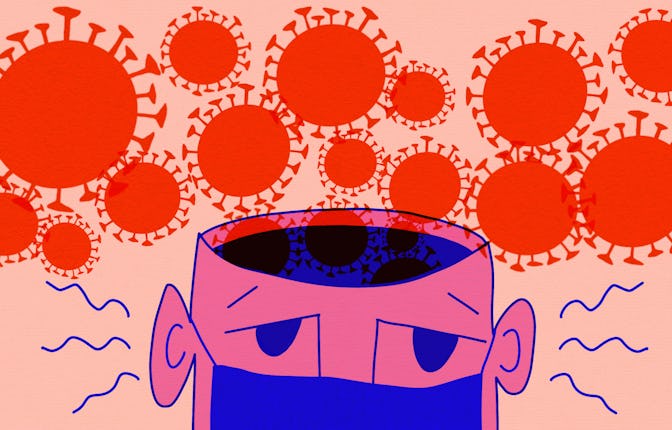Pandemic anxiety is gendered, just like everything else
Guess which gender was more likely to develop an anxiety disorder during the pandemic?

The pandemic has had a dramatic effect on the mental health of people the world over. Not only has COVID created an increase in anxiety and depression, but it’s even spawned new kinds of pandemic-centric anxiety. A new study suggests that the increase in anxiety disorders during the pandemic is definitely gendered. It’s not exactly a shocker that women have disproportionately borne the brunt of pandemic-spawned mental health issues, but some of the stressors that researchers found at the root of peoples’ anxieties are pretty surprising.
The study, which was published today in the Journal of Affective Disorders, analyzed almost 4,000 surveys conducted across Canada. Researchers found that in the first year of the pandemic, about one in seven Canadians experienced the symptoms of Generalized Anxiety Disorder (GAD). That’s almost 14% of individuals who participated. For context, the rate of GAD in Canada was about 2.6% before the pandemic, EurekAlert reported.
Researchers really wanted to uncover the why behind those statistics. “It is fundamental that we strive to understand the social factors that contributed to these striking differences,” Shen (Lamson) Lin, a doctoral candidate at the University of Toronto’s Factor-Inwentash Faculty of Social Work and lead author on the study, told EurekAlert. The social factors that Lin’s team focused on were the widespread use of social media and exposure to misinformation.
While I totally disagree with the binary reduction of gender, the differences that researchers found between men and women’s increased anxiety is illuminating. Over 17% of women reported symptoms of GAD compared to about 10% of men, according to the study. Perhaps more importantly, scientists found that exposure to misinformation was the greatest stressor for men. Interestingly, men with the lowest rates of reported anxiety also had the lowest rates of exposure to COVID misinformation and vice versa. In other words, the odds of a man developing an anxiety disorder increased with exposure to misinformation.
For women, the most important factor in creating the increase in GAD was job precarity. “Women are overrepresented in food service and accommodation sectors, which were hard hit by the COVID-19 crisis, Lin told EurekAlert. Women in the study who experienced job precarity were three times more likely to develop symptoms of GAD. Job precarity did not seem to play a role in men’s anxiety, researchers told EurekAlert.
Importantly, even if they didn’t experience unemployment or underemployment, women were likely to experience greater stress than men during the pandemic due to their professions. The jobs that many women occupied during the pandemic were low paying, high risk, and high stress. “Gender-based occupational segregation results in women being overrepresented in the health and social care workforce, where they are often underpaid and have a higher risk of exposure to COVID-19 pathogens,” Lin said.
It feels important to note that what seemed to affect men most was something wholly situational, while what impacted women most can be situated within the pandemic, job precarity is a systemic issue that affected all non-white non-AMAB people long before COVID. This is a sad truth, but it is also an opportunity for change.
“Mental health interventions need to be gender responsive,” Lin told EurekAlert. “They should also tackle upstream social determinants of health in this public health emergency.” The data that studies like this one provides can potentially help us put safeguards in place that prevent indecent and unnecessary inequities in mental health as we move forward.